39 saturated fat on food labels
What does total fat mean on food labels? - omeo.afphila.com If a food has these fats, the amount will be listed on the label under total fat. They are measured in grams. Look for foods that have no trans fats or are low in them (1 gram or less). What is on food labels? The list of nutrients includes total fat, trans fat, saturated fat, cholesterol, sodium, total carbohydrate, dietary fiber, sugars, and ... Saturated fat - Healthier. Happier. Saturated fat is a type of fat that is solid at room temperature and mostly found in animal-based foods but also in some plant-based foods. Examples include fatty cuts of meat, full-fat milk, butter, cream, coconut and palm oil, most commercially baked products and deep-fried foods.
Understanding Food Nutrition Labels | American Heart Association Remember that the information shown in the label is based on a diet of 2,000 calories a day. You may need less or more than 2,000 calories depending upon your age, gender, activity level, and whether you're trying to lose, gain or maintain your weight. When the Nutrition Facts label says a food contains "0 g" of trans fat, but includes ...

Saturated fat on food labels
Fat Content on Food Labels - Reading Between the Lines When it comes to listing fat on food labels, manufacturers are required to only list total fat and saturated fat. Some also voluntarily list monounsaturated and polyunsaturated fat, but it's unlikely you'll see trans fat listed." Food labels - NHS Nutrition labels are often displayed as a panel or grid on the back or side of packaging. This type of label includes information on energy (kJ/kcal), fat, saturates (saturated fat), carbohydrate, sugars, protein and salt. It may also provide additional information on certain nutrients, such as fibre. Saturated fats - HEART UK Per 100g of food - low-fat is 3g or less and low saturated fat is 1.5g or less. Per 100g of food - high fat is 17.5g or more and high saturated fat is 5g or more. Many foods have labels on the front of pack, making it easy to check the amount and type of fat they contain.
Saturated fat on food labels. PDF Read the Food Label To Choose Foods Lower in Saturated Fat Read the Food Label To Choose Foods Lower in Saturated Fat Food labels tell you what you need to know about choosing healthier options. Here's a food label for a carton of whole milk. Whole 1. Serving Size and Number of Servings The serving size is 8 fluid ounces (1 cup). There are two servings in this carton. 2. Amount Per Serving Daily Value on the New Nutrition and Supplement Facts Labels Which Nutrients Are Required to Be Listed on the Nutrition and Supplement Facts Labels? The Nutrition Facts label must list total fat, saturated fat, trans fat, cholesterol, sodium,... How to Understand and Use the Nutrition Facts Label | FDA Saturated fat, sodium, and added sugars are nutrients listed on the label that may be associated with adverse health effects - and Americans generally consume too much of them, according to the... Trans Fats: The Truth in Labeling | Atkins They will also permit manufacturers to say "zero trans fats" on the label if a serving size contains a half gram or less. This is a bad rule that needs changing. With small and unrealistic "serving sizes" on the nutrition facts label, each of which contains just under ½ a gram, you could easily wind up consuming a gram or two in a ...
Misleading Nutrition and Food Labels - Health Jun 07, 2012 · 16 Most Misleading Food Labels Terms like "fat free" or "all natural" are often slapped on a food item that may not be healthy at all. ... When the dangers of saturated and trans fat became clear ... PDF National Institutes of Health These food labels are for one serving of milk: 1 cup (8 ounces). Fat-free milk has the lowest % of saturated fat and cholesterol. It has 0% of the Daily Value of saturated fat and 2% cholesterol. Whole milk has 25% of the Daily Value of saturated fat and 12% cholesterol. Milk does not have trans fat. Fat-free milk is a better choice. Potato Chips Easy Guide to Understanding Food Labels When You Have High ... - MyDoc Saturated fat is a type of fat that raises your total and LDL cholesterol and risk of heart disease, so intake should be limited. The average adult should consume less than 20 grams of saturated fat per day. Trans fat is more harmful and damaging to the arteries as it raises LDL (bad) cholesterol and lowers HDL (good) cholesterol. Label: Front of pack labels > Five key nutrients > Saturates Experts recommend that no more than 10 percent of calories should come from saturated fats (around 20g based on a 2000 calorie diet). Examples of foods high in saturates (saturated fats) are: meat products and pies, sausages, hard cheese, butter, pastry, cakes, biscuits, cream and palm oil. The Reference Intake for saturated fat is 20 grams.
Nutrition Facts table formats - Food labels - Canadian Food ... Note: the percent daily value only applies to Fat, Saturated Fat plus Trans, Sugars, Sodium, Potassium, Calcium and Iron. Fat, Saturated Fat, Trans, Carbohydrate, Fibre, Sugars, and Protein are each followed by a lowercase g and Cholesterol, Sodium, Potassium, Calcium and Iron are each followed by a lowercase mg. All of the nutrients are in ... How to understand food labels | Eat For Health The Nutrition Information Panel on a food label offers the simplest and easiest way to choose foods with less saturated fat, salt (sodium), added sugars and kilojoules, and more fibre. It can also be used to decide how large one serve of a food group choice or discretionary food would be and whether it's worth the kilojoules. How to eat less saturated fat - NHS - NHS try reduced-fat spreads, such as spreads based on olive or sunflower oils; How to cut down on saturated fat. Practical tips to help you specifically cut down on saturated fat: At the shops. Nutrition labels on the front and back of packaging can help you cut down on saturated fat. Look out for "saturates" or "sat fat" on the label. Learn How the Nutrition Facts Label Can Help You Improve Your Health That means if you consume 2,000 calories in a day, added sugars should account for no more than 200 calories. Read the Nutrition Facts labels on your packaged food and drinks to keep track of sugars, fats, protein, and other nutrients. Most sodium we consume is from salt, and salt is commonly in processed foods.
How To Read Food and Beverage Labels - National Institute on Aging Most older adults exceed the recommended limits for saturated fats, sodium, and added sugars. Compare and choose foods to get less than 100% DV of these each day, making sure to adjust for how many calories are in your diet. Additionally, many older adults do not get the recommended amounts of dietary fiber, vitamin D, calcium, and potassium.
Reading Food Labels (for Parents) - Nemours KidsHealth Saturated fats should account for less than 10% of the calories that kids eat each day. Trans fat should be as low as possible (less than 1% of total calories). Unsaturated Fat Unsaturated fats may also be listed under total fat. Unsaturated fats are often called "good fats" because they don't raise cholesterol levels as saturated fats do.
Trans Fats, Health and Nutritional Labeling of Foods The labeling requirements are based on scientific evidence that consumption of saturated fats and TF may raise low-density lipoprotein (LDL) levels and increases the risk of coronary heart disease. LDL is commonly known as "bad cholesterol". A small amount of TF is found naturally in vegetable oils and some animal derived foods.
How to track saturated fat - Mayo Clinic Mar 06, 2021 · The main sources of saturated fat in the typical U.S. diet are sandwiches, desserts and sweet snacks. Saturated fat occurs naturally in meat and dairy products. It's added to many baked goods. The Nutrition Facts label on packaged foods lists the amount of saturated fat for one serving.
Facts about fat - NHS Buying lower fat foods. The nutrition labels on food packaging can help you cut down on total fat and saturated fat (also listed as "saturates", or "sat fat"). Nutrition information can be presented in different ways on the front and back of packaging. Total fat. high fat – more than 17.5g of fat per 100g
Reading Food Labels | ADA - American Diabetes Association Put food labels to work. The Nutrition Facts labels on foods are really the key to making the best choices. We'll cover the basics so that these labels make shopping easier for you. You've heard it all. From carb-free to low-carb, to whole and empty carbs, it's hard to know what it all means. Blood sugar highs and lows aren't always ...
Do Saturated Fats & Unsaturated Fats Equal Total Fats on Nutrition Labels? So, if a serving of your favorite cookies has 0.49g of transfat, saturated fat or unsaturated fat - just 0.01g away from the 0.5g threshold - the manufacturer can label it as containing 0g of...
Trans and saturated fat on food labels in Canada: fact or fiction? This study aims to provide an assessment of the accuracy of the reported trans fatty acid and saturated fatty acid values on food labels in selected foods. Methods: Over 380 samples of cookies, crackers, granola bars, breakfast bars and a variety of frozen foods were collected between 2005 and 2008 in the Greater Toronto Area, Ottawa and ...
Food Labels | CDC - Centers for Disease Control and Prevention If you eat the whole thing, you are eating 8 times the amount of calories, carbs, fat, etc., shown on the label. Total Carbohydrate shows you types of carbs in the food, including sugar and fiber. Choose foods with more fiber, vitamins, and minerals. Choose foods with lower calories, saturated fat, sodium, and added sugars. Avoid trans fat.
Interpreting Total Fat and Types of Fat on Food Labels Trans fats and, in some cases saturated fats, are considered "unhealthy" or "bad" while monounsaturated and polyunsaturated (omega-3) fats are generally healthier alternatives or "good" fats. Saturated fats are naturally found in animal-based foods including meats, dairy products and eggs.
How to read food labels: MedlinePlus Medical Encyclopedia If a food has less than 0.5 grams of saturated fat in the serving size on the label, the food maker can say it contains no saturated fat. Remember this if you eat more than 1 serving. You should also pay attention to trans fats on any food label. These fats raise "bad" cholesterol and lower your "good" cholesterol.
How to Read Food Labels for Fats and Oils Interactive Label Click/tap for details about label claims. Fats & Oils Food Label Claims All-Natural/Natural Canola vs. vegetable oil Cold-pressed Country of Origin Labeling (COOL) Expeller-pressed Extra Virgin Coconut Oil Good source of Omega-3s Healthy Hydrogenation Lite Low fat Low in saturated fat Olive Oil Label Claims Pure Refined Saturation
Fats | Nutrition.gov Saturated Fat HHS, Food and Drug Administration, Center for Food Safety and Applied Nutrition Read about saturated fat - what it is, where it is found, and how you can use the Nutrition Facts Label for reducing saturated fat in your diet. The Skinny on Fat HHS, National Institutes of Health Fat is an essential nutrient for our bodies.
Reading and Understanding Food Labels and Nutrition Info - Beaumont Health A one-percent reduction of saturated fat in your diet reduces your heart disease risk by three percent. Keep saturated fat to less then 15 grams per day. It is not required to list unsaturated fats (polyunsaturated and monounsaturated) on food labels. In general, unsaturated fats lower cholesterol. The healthiest unsaturated fat is canola oil.
What does saturated fat mean on a food label? Most saturated fats are animal fats. They're found in high- fat meats and dairy products. Saturated fat sources include: fatty cuts of beef, pork, and lamb. dark chicken meat and poultry skin. high-fat dairy foods (whole milk, butter, cheese, sour cream, ice cream) tropical oils (coconut oil, palm oil, cocoa butter) lard.
Saturated fat - Wikipedia Fat profiles. While nutrition labels regularly combine them, the saturated fatty acids appear in different proportions among food groups. Lauric and myristic acids are most commonly found in "tropical" oils (e.g., palm kernel, coconut) and dairy products.
7 Nutrition Label Ingredients to Avoid - Walker Methodist Sodium Nitrites and Sodium Nitrates These food label ingredients are often found in processed meats such as bacon, deli/sandwich meat, and hot dogs. They have been known to cause colon cancer and lead to heart disease and obesity. This is why it is important to have good quality meats! MSG (monosodium glutamate)
Food Labels: Fat & Cholesterol | Home & Garden Information Center Select margarines with 0 grams of trans fat and no more than 2 grams of saturated fat per tablespoon. Avoid hydrogenated fats with more than 2 grams of saturated fat per tablespoon. When comparing food labels, combine the grams (g) of saturated fat and trans fat, then choose the food with the lower combined amount.
Saturated fats - HEART UK Per 100g of food - low-fat is 3g or less and low saturated fat is 1.5g or less. Per 100g of food - high fat is 17.5g or more and high saturated fat is 5g or more. Many foods have labels on the front of pack, making it easy to check the amount and type of fat they contain.
Food labels - NHS Nutrition labels are often displayed as a panel or grid on the back or side of packaging. This type of label includes information on energy (kJ/kcal), fat, saturates (saturated fat), carbohydrate, sugars, protein and salt. It may also provide additional information on certain nutrients, such as fibre.
Fat Content on Food Labels - Reading Between the Lines When it comes to listing fat on food labels, manufacturers are required to only list total fat and saturated fat. Some also voluntarily list monounsaturated and polyunsaturated fat, but it's unlikely you'll see trans fat listed."
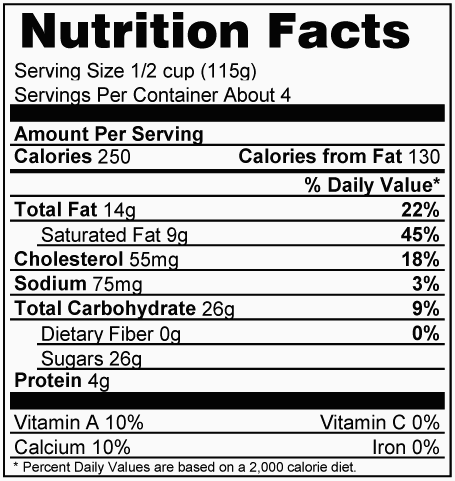
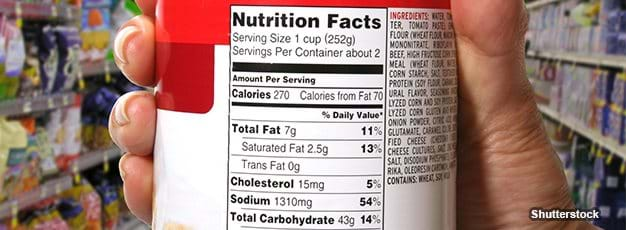
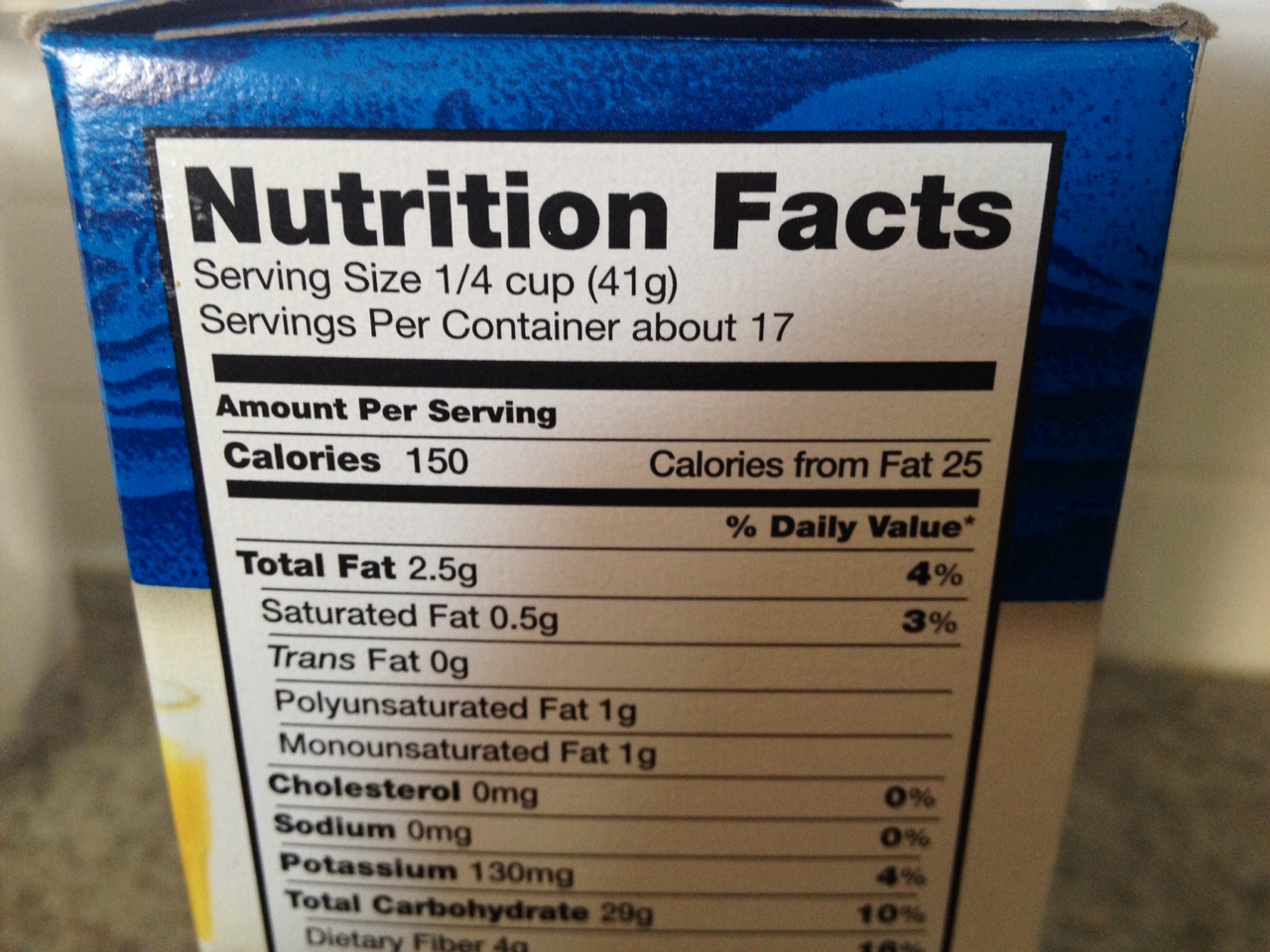
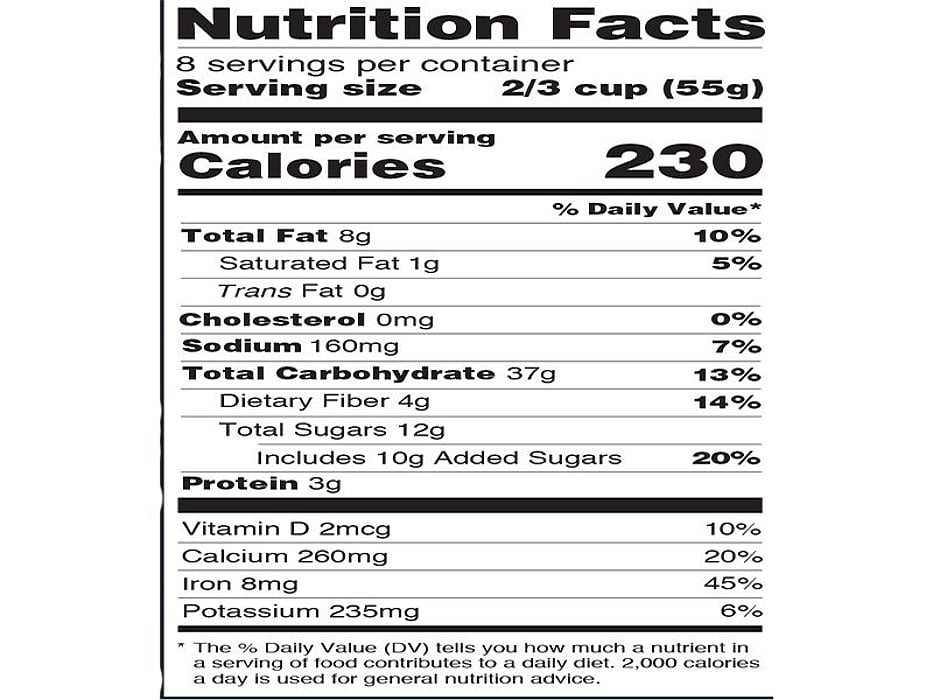

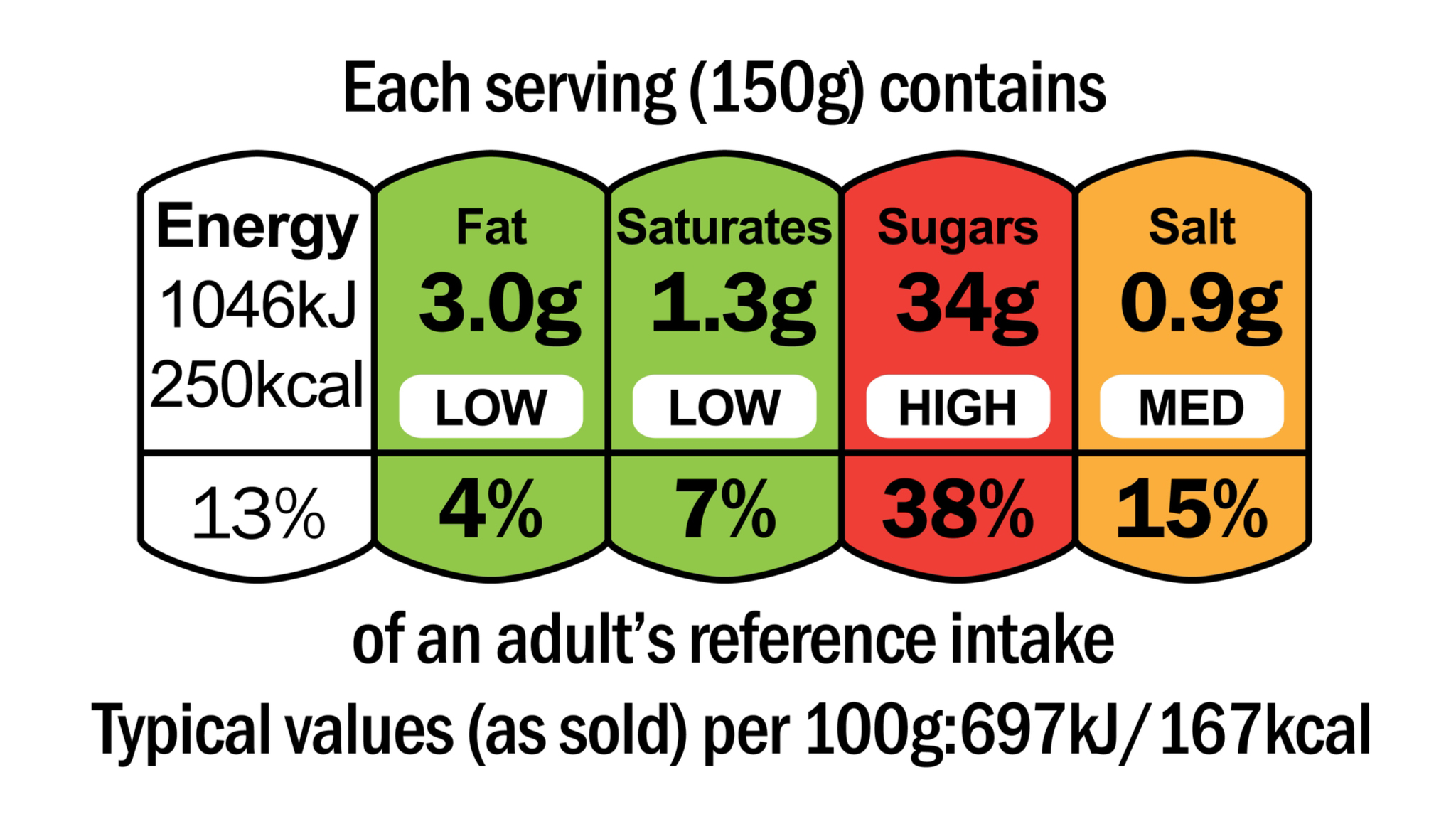
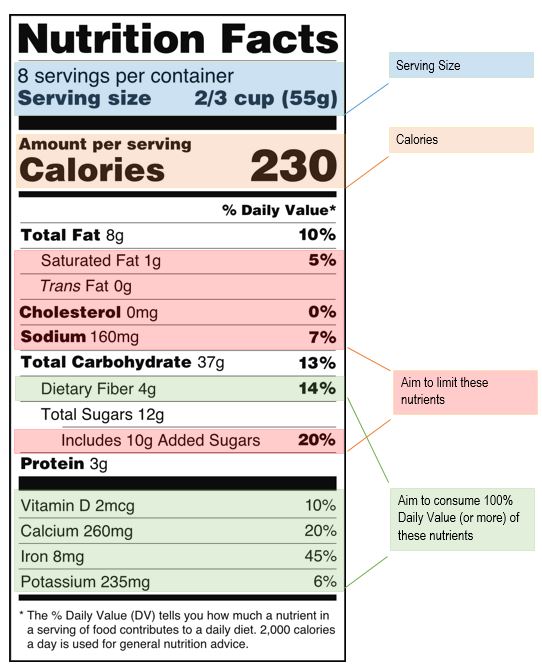
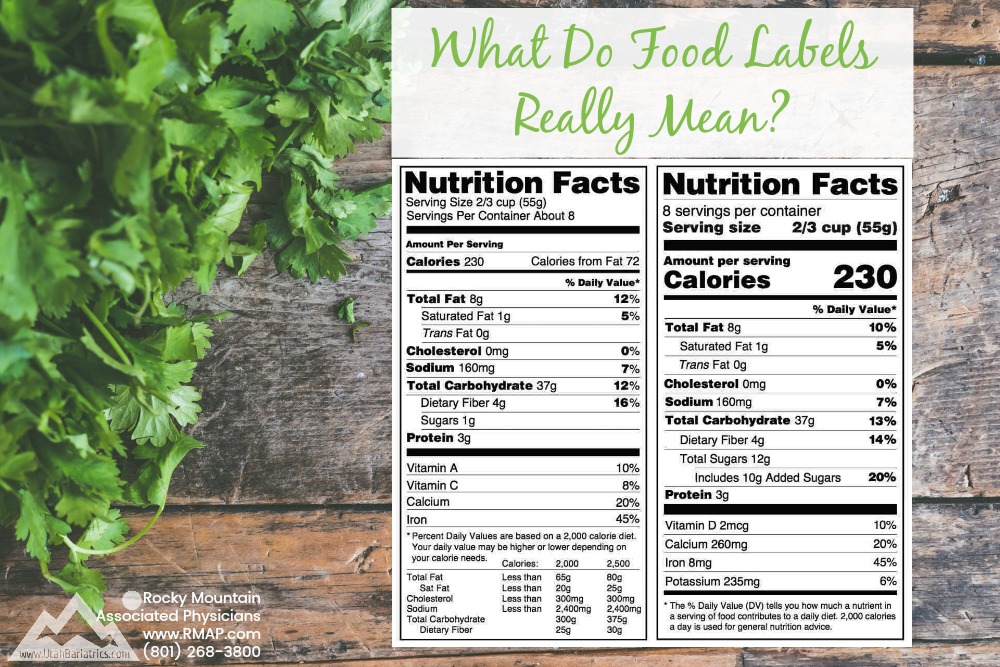
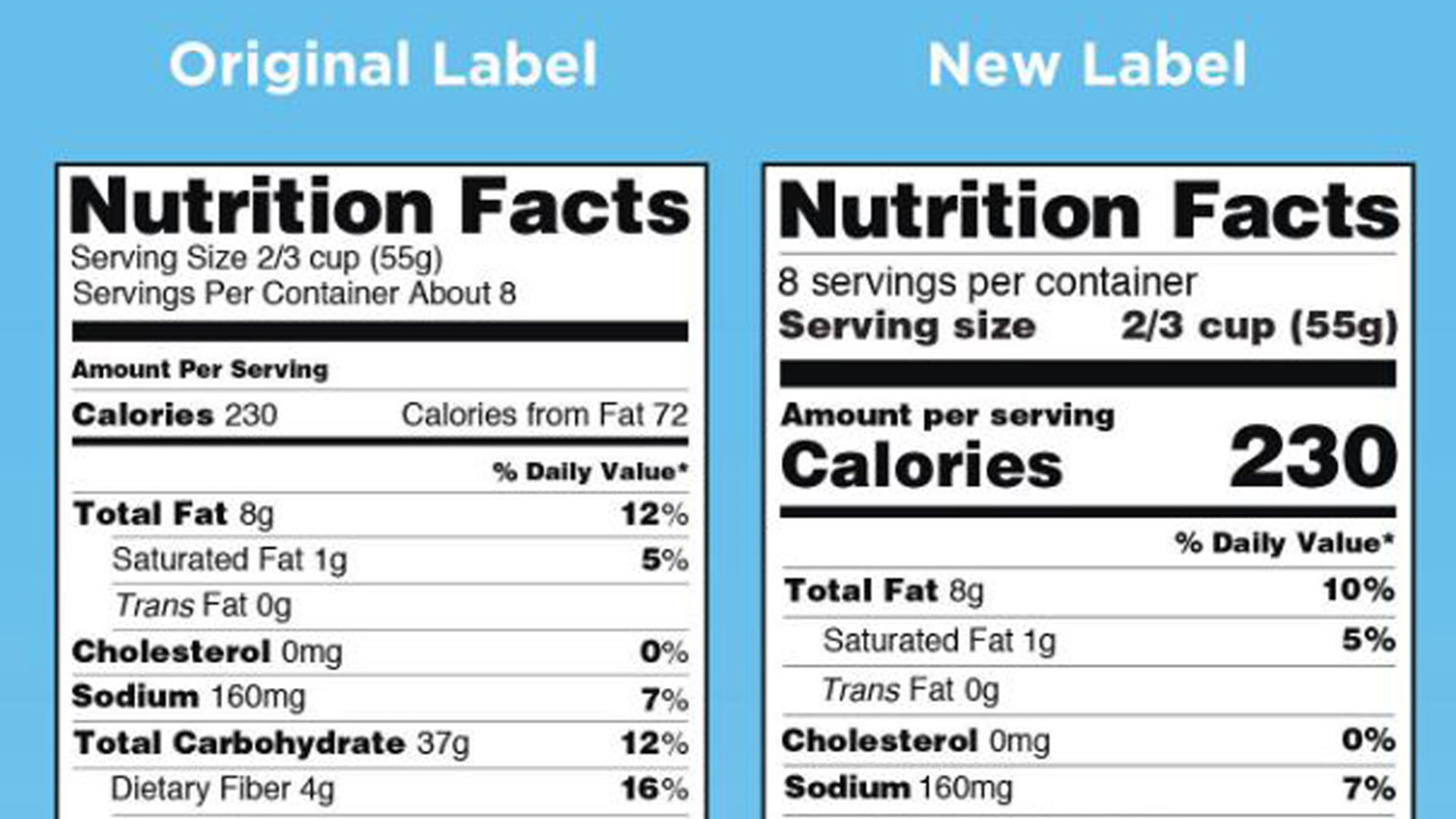
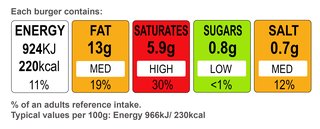
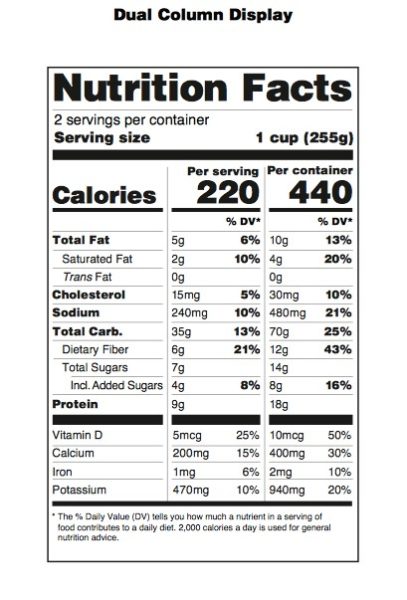
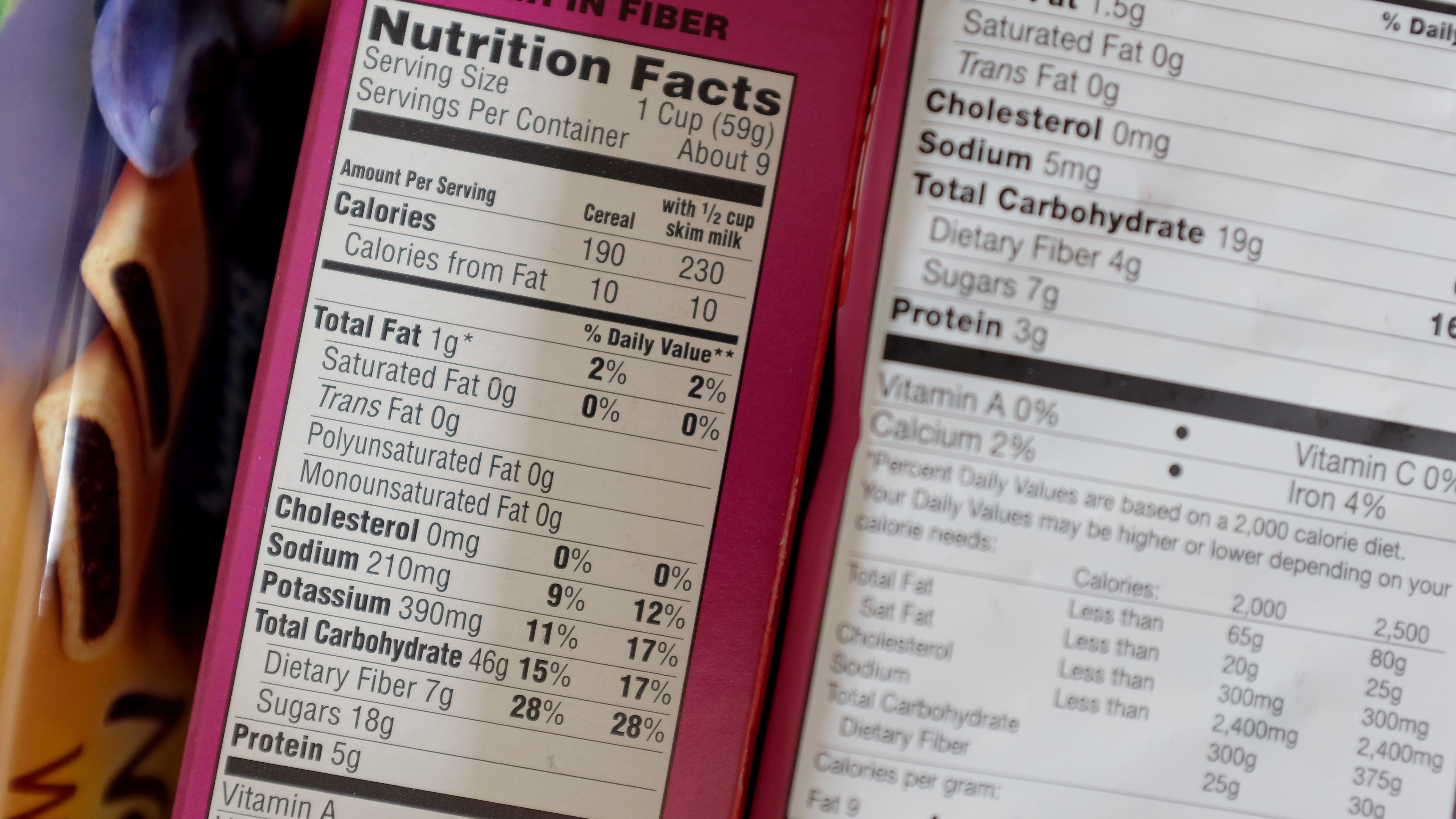
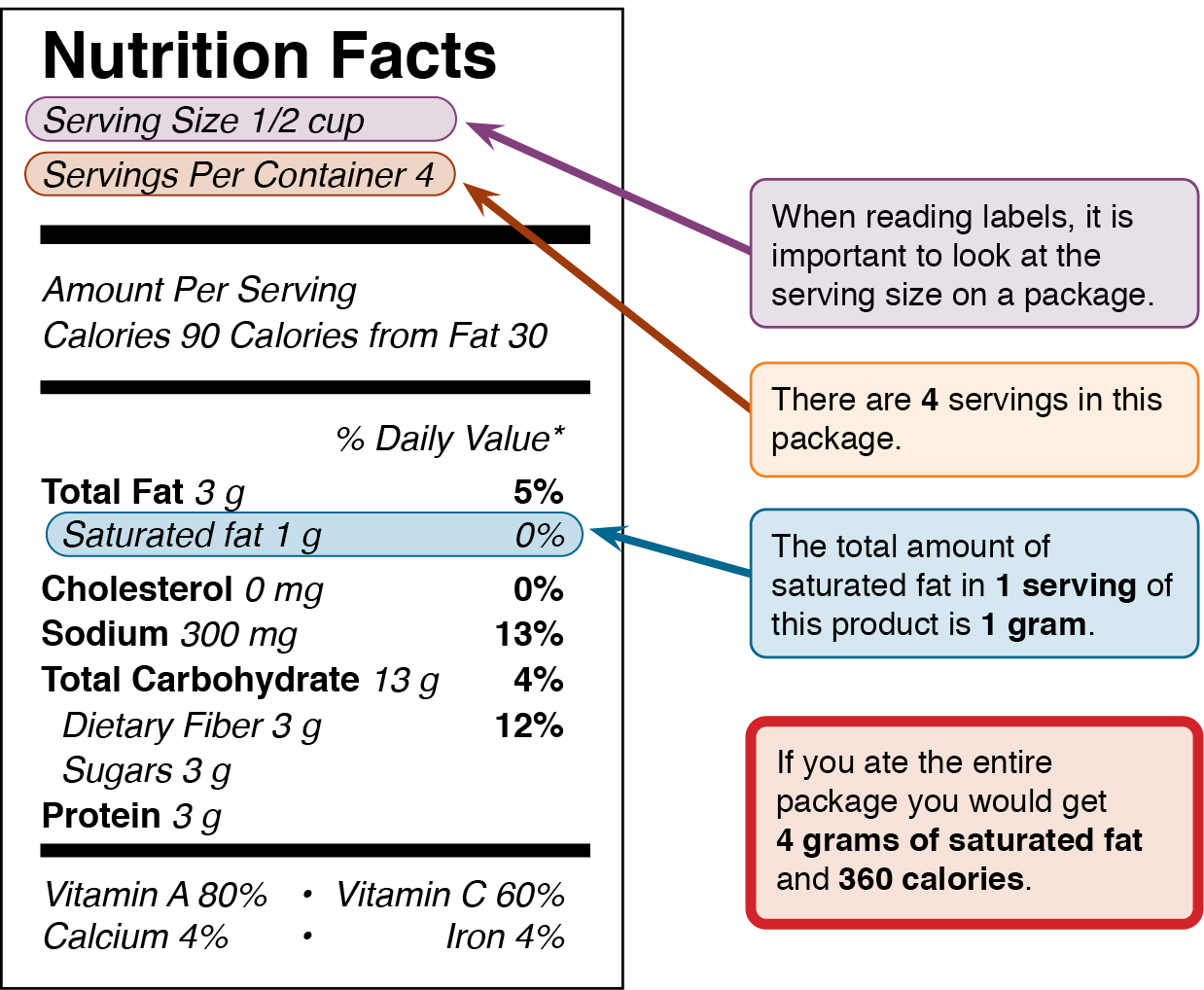

/cloudfront-us-east-1.images.arcpublishing.com/gray/OB55H4DMDJCPFHZ65IDU2JVZMY.png)

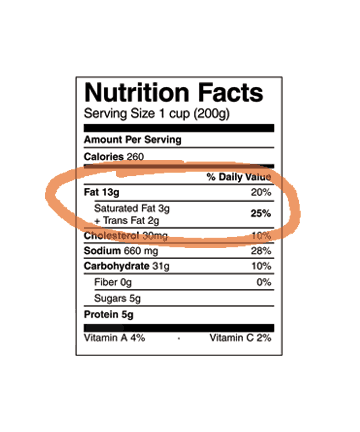
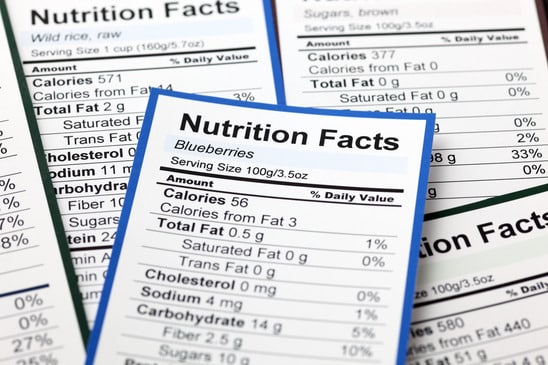



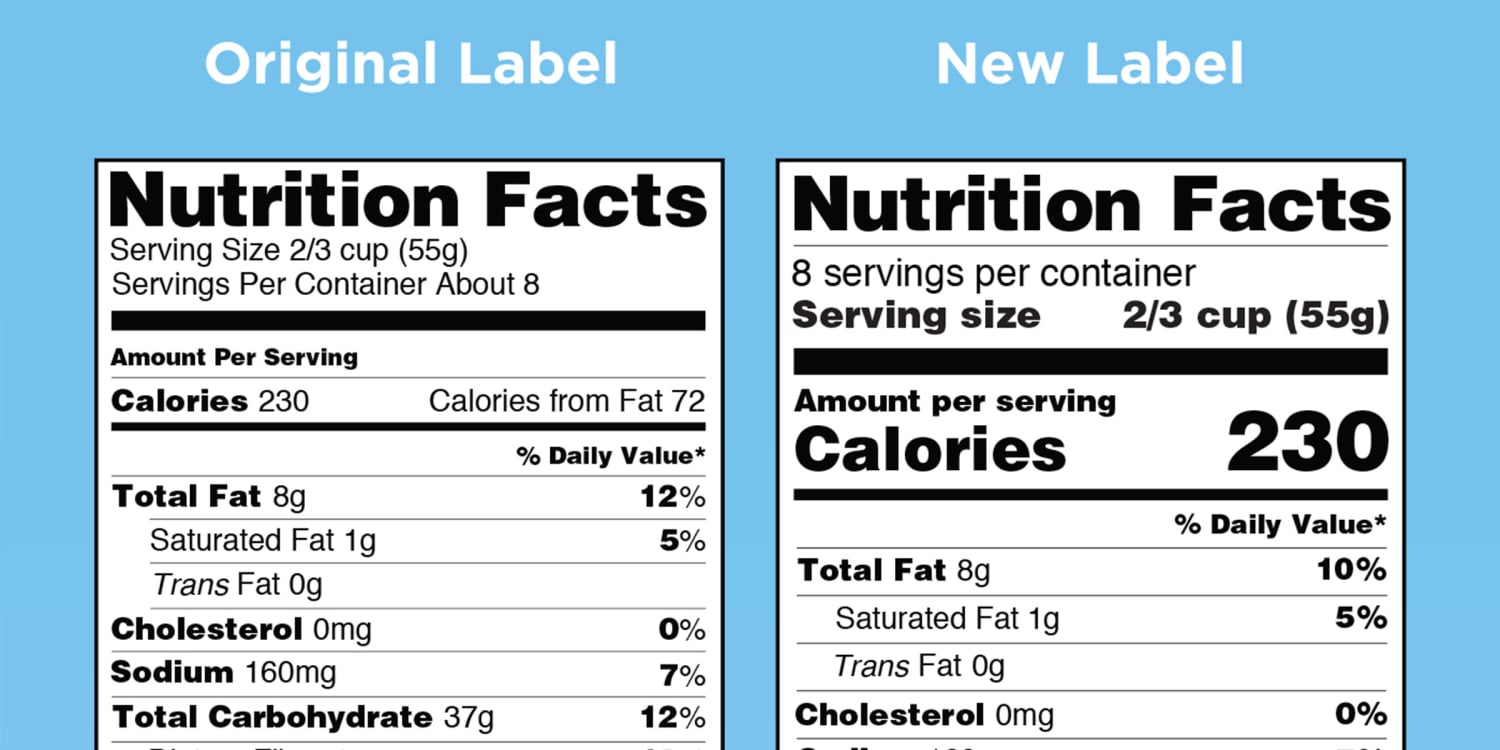
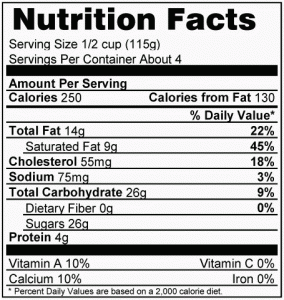




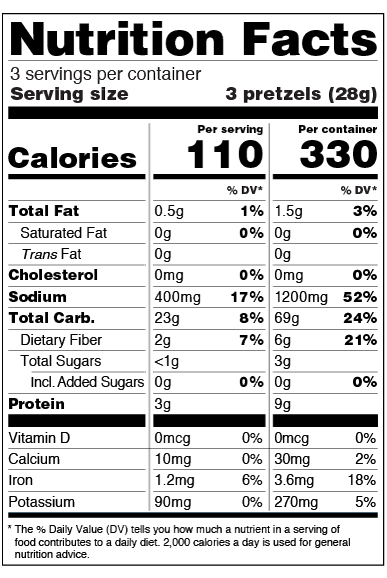

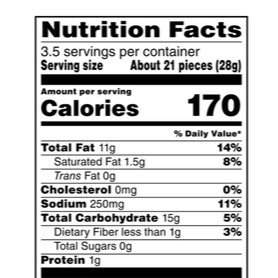
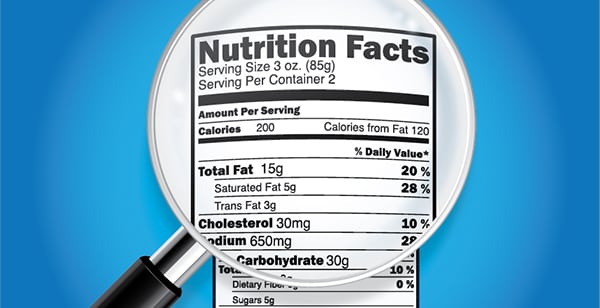
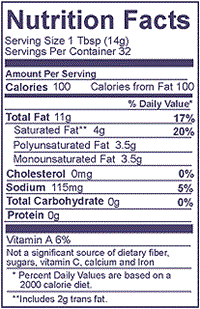

Post a Comment for "39 saturated fat on food labels"